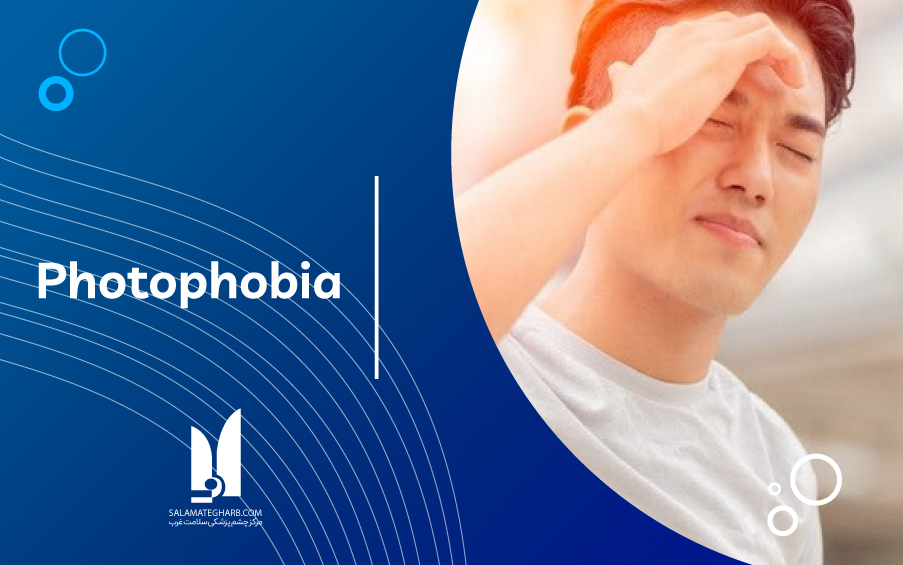What does photophobia mean?
Photophobia means sensitivity to light or fear of light, usually in people with eye discomfort or light-induced eye pain.
Light plays an effective role in the visual process. Therefore, sensitivity to light can also disrupt the visual process of the individual. Photophobia means fear of noise or sensitivity to light.
What are the symptoms of photophobia?
Photophobia is possible at all ages. Therefore, based on the age of individuals, it is not possible to comment on photophobia. On the other hand, the symptoms of this disease are not the same in all people. Symptoms of the disease may occur differently in each individual. The main symptoms of this disease are:
- Eye incompatibility with light
- Eye sensitivity to light
- The feeling of seeing halo of brown color in the dark and even when the eyes are closed.
- The feeling of very bright lights in space
- Difficulty reading texts
- Difficulty looking at images and recognizing them
- Feeling pain or discomfort of the eye when looking at light or luminous objects
- Double vision of either eye or both eyes
- Headaches or migraines
- Tearing the eyes
- Dryness in the eye
- Eye fatigue and a tendency to close the eyes
- Eye troughs
What are the causes of photophobia?
Any disturbance in the relationship between light-receiving eye cells and nerve vessels that lead to photophobia in order to identify images in the brain. On the other hand, migraine headaches and cluster headaches are one of the main causes of sensitivity to light which is referred to as photophobia.
Below we will share with you a list of the main causes of the disease:
- Inflammation in the protective lining of the brain and spinal cord, known as meningitis.
- Difficulty in balance, control and movement of the eyes and movement problems caused by brain disturbances
- Tumor in the pituitary gland
- Dry eye
- Swelling inside the eye
- Corneal swelling
- Swelling of the colored ring around the pupil
- Cataracts in the eye
- Scratches in the cornea of the eye
- Damage to the light-sensitive layer of the dorsal part of the eye
- Involuntary eye closure
- Depression
- Bipolar disorder
- Isolationism
- Inappropriate eye lenses
- Use eye lenses for long hours
- Eye infections
- Use of drugs such as antibiotics, forzmide and quinine
Severe sensitivity to stimuli that are usually sensory, such as neuroharpsy, is also seen in psychiatric diseases.
How can photophobia be diagnosed?
Diagnosis of photophobia is only possible by visiting a doctor and conducting examinations and tests. In other words, just having some of the symptoms mentioned in the previous section, it is not possible to give a definitive opinion about the infection or not.
However, your doctor should check your eye health or possible brain problems in order to give a definitive opinion. If needed, your doctor may prescribe your vote for a definitive diagnosis of the test or MRI.
In slate lamp test or lighting control, a special microscope is performed to check the eyes using special light. In this way, the specialist can comment on whether or not you have eye problems or sensitivity to light.
In MRI or imaging, using magnetic radiation or radio waves, it is commonly used for eye photography or to diagnose brain problems, using this imaging technique, even the smallest brain problems can be diagnosed.
If needed, the ophthalmologist will also measure intraocular pressure using a special device.
In many cases visual radiography is also used to diagnose conditions such as ocular degeneration and retinal diabetes.
Is there a cure for photophobia?
In general, the choice of photophobia treatment depends on the causative agent. Therefore, first, before the desired treatment is chosen, the reason for the infection should be determined.
In general, however, changing lifestyle is the best way to prevent or control photophobia. Observing some points can play an effective role in controlling this disease.
- Don’t forget your sunglasses when you go out.
- Try not to be exposed to light as long as possible. Because it increases the sensitivity of your eyes.
- Try to use as many smoked paint as possible for your car’s glass. This reduces your eye’s sensitivity to light.
- If you have dry eyes, use eye drops. This way your eyes will be wet.
- Take simple eye infections seriously. Because untreated infections can have irreparable consequences.
- When buying sunglasses, it is better to make polarized glasses.
- Do not use the lens as much as possible. However, if you have to use medical lenses, it is advisable to get the right lens in consultation with your doctor.
- If the drug allergy has led to photophobia, it is advisable to stop taking these medications with your doctor’s advice.
- If you have migraines and are sensitive to light, it is advisable to consult your doctor about ways to control this problem.


Leave A Comment